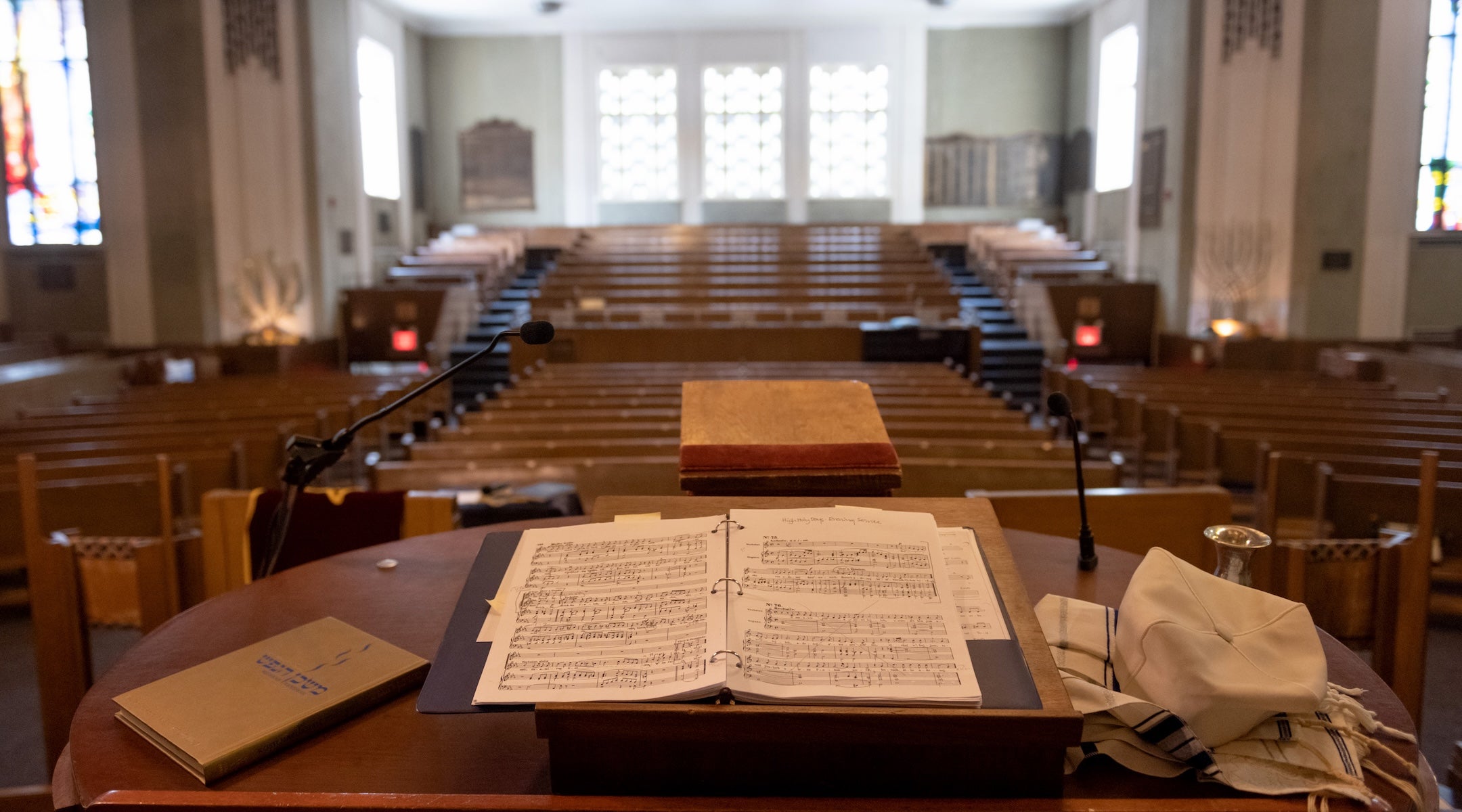For years, synagogue leaders have said they can’t find enough clergy to fill their pulpits, leading to warnings of a nationwide rabbinic shortage. At the same time, openings for campus rabbis at Hillel chapters draw an average of 19 applicants each.
This mismatch between what rabbis want to do and the kinds of jobs available is among the many findings in the first-ever empirical study of the American rabbinate across denominations, released this week by the Atra Center for Rabbinic Innovation.
The study also examines the so-called “rabbinic pipeline” — the concern that declining enrollment at seminaries means too few people want to become rabbis. Here, too, the findings challenge conventional wisdom.
Surveying 450 people who considered the rabbinate but chose other careers, the study finds that lack of motivation was not a deciding factor. The most common barriers cited were the cost and duration of rabbinical school, the need to relocate, and concerns about the practicality of such a career.
In addition to these “would-be” rabbis, researchers surveyed nearly 1,500 others — including working and retired rabbis, current students, and seminary dropouts. They also interviewed leaders of rabbinical schools and associations, along with representatives of a wide range of rabbinic employers, while collecting recruitment and enrollment data.
Almost as notable as the findings is the diversity of those who took part. Participating organizations include every rabbinic institution from Reconstructionist and Reform to Conservative and Modern Orthodox, as well as all major non-denominational programs. Participation also came from umbrella groups representing Jewish summer camps, community centers, federations, and Hillel chapters. (Haredi Judaism was outside the study’s scope.)
“It’s a groundbreaking effort because there’s never been a comprehensive study of the rabbinate before, but it didn’t take much persuasion to get broad participation,” Atra’s executive director, Rabbi Shira Koch Epstein, said in an interview.
The report’s origin can be traced to a 2022 sermon by Rabbi Elliot Cosgrove of Park Avenue Synagogue, which called attention to the rabbinic pipeline problem. Among those who took his message to heart was philanthropist Heather Baker. As she began investigating, she discovered that there was no data on which to draw, so she decided to spearhead an effort that culminated in Atra’s new report.
Epstein described an eagerness to get involved that was motivated by years of debate about the issues addressed in the study. In one breakthrough, Atra convened dozens of leaders of institutions and programs that cultivate Jewish leaders and ordain rabbis, spanning the denominational range, for a brainstorming session about tackling the rabbinic pipeline.
“Everyone’s been trying to address the problems and the challenges, and we haven’t actually had any shared good information and data to help us do that,” Epstein said. “People actually want to work together on this, because they recognize that no one can do it alone.”
The study does not offer hard and fast solutions, instead positioning itself as a “mirror and a map” for collective action. Here are some of the highlights.
1. Only about half of all rabbis work in synagogues.
Those who do tend to find their job overly stressful and exhausting. Other kinds of rabbinical jobs offer much higher job satisfaction.
About 56% of rabbis are in pulpit jobs. The rest work for nonprofits, as chaplains, for day schools and universities or as independent entrepreneurs. The researchers spoke to 222 people who have held jobs in both categories. They said that working for a synagogue pays better but that, by every other metric of job satisfaction, working outside the synagogue is significantly better.
The study highlights this difference but also notes with a tone of reassurance and awe that 97% of all rabbis said their jobs are rewarding.
2. After years of decline, rabbinical school enrollment appears to be stabilizing.
The widespread perception that the major denominational seminaries are graduating fewer students while newer and non-denominational schools are growing is validated in the study. The latter are now producing slightly more rabbis than the former. Over the past five years, enrollment declines at Conservative and Reform seminaries have stopped, suggesting that a new normal has been reached.
3. Most rabbinical students are women and most are LGBTQ. Many are converts.
Rabbinical students today reflect a far more diverse cohort than in the past. According to the Atra report, 58% identify as women, 30% as men, and 12% as nonbinary.
An estimated 51% identify as LGBTQ, a contrast made starker with survey data collected in the same study showing that only 15% of rabbis ordained 10 to 20 years ago are LGBTQ.
Meanwhile, 16% of rabbinical students are Jews by choice and 12% identify as a race other than white.
Both Atra and the researchers they commissioned to carry out the study caution against drawing sensational conclusions about the growing diversity.
“There’s no data-driven evidence as to why it’s happening and what the implications of it are yet to be known,” Wendy Rosov, the study’s lead researcher, said in an interview.
4. Views about Israel or Zionism don’t factor heavily into decisions about whether to become a rabbi.
The past few years have seen some students drop out of rabbinical school in protest of what they say is anti-Zionism in the student body and dozens of students signing on to petitions that are harshly critical of Israel.
Atra didn’t collect data on how current and future rabbis feel about Israel. But it did check how whatever view they held factored into their motivation for the job. Only a small minority said they wanted to become rabbis as a way to promote Israel and an even smaller minority said they were worried about being silenced regarding their criticism of Israel.
The motivating factors people most often checked often were “a desire to serve others,” “I felt called by my love of Judaism,” “An interest in deepening their knowledge of Jewish text and traditions,” and “a desire to teach.”
5. A wave of rabbinic retirements is looming.
The Atra report estimates there are about 4,100 rabbis currently working across congregations, schools, nonprofits, campuses, and chaplaincies. But the profession is getting older only 6% are under 35, while a quarter are over 65.
With most rabbis ordained in their mid-30s and many staying in their roles for decades, the report warns that retirements may soon outnumber new entrants unless younger Jews are drawn into the field.
The report closes on a note of cautious optimism, calling for collective action rather than quick fixes. It outlines nine areas where collaboration could make the biggest difference — from easing the financial burden of rabbinical training to modernizing education, expanding non-congregational careers, and improving mentorship. Epstein is hopeful that the collaborative spirit embodied in the summer gathering could translate into shared solutions.
“This is a surmountable challenge,” she said.
Power the news that matters to you. Before 2025 ends, help (JEWISH REVIEW)’s independent, award-winning newsroom document Jewish history in real-time.




